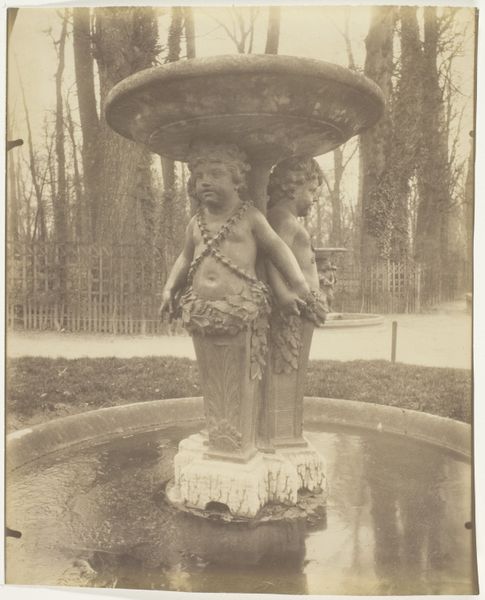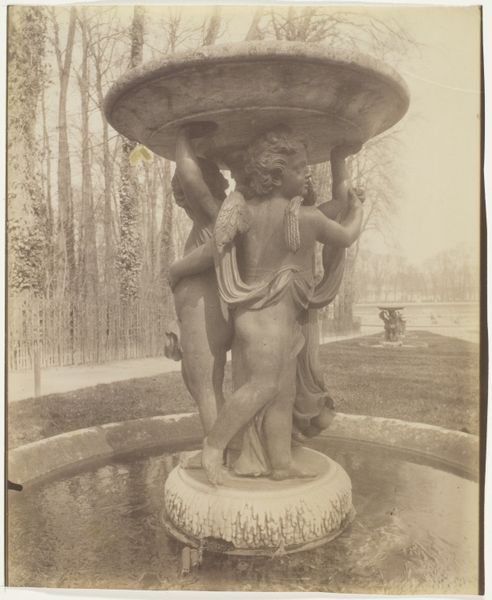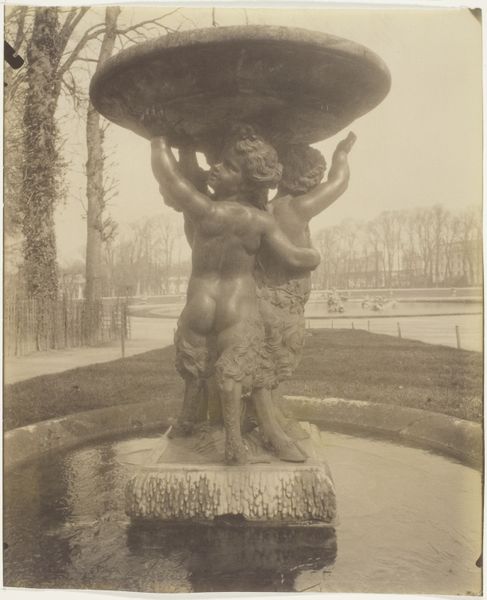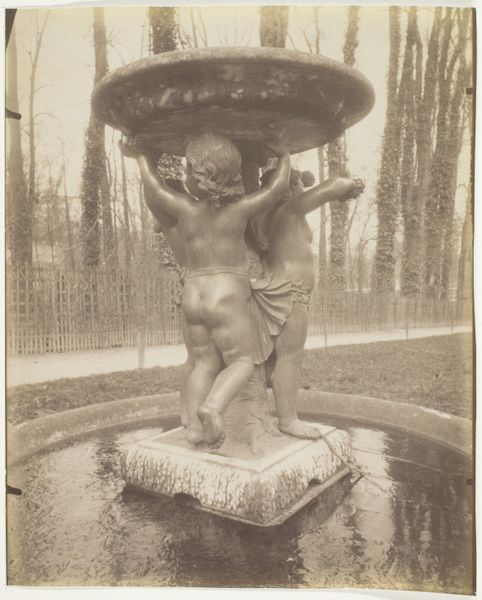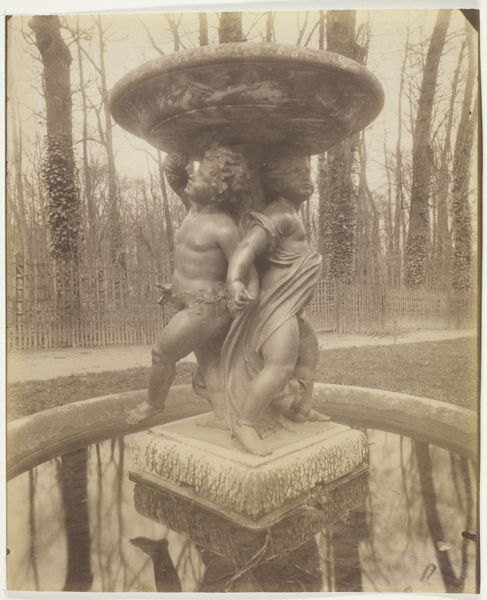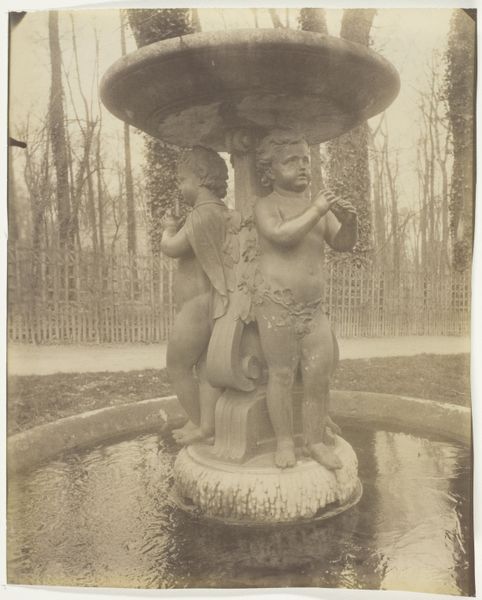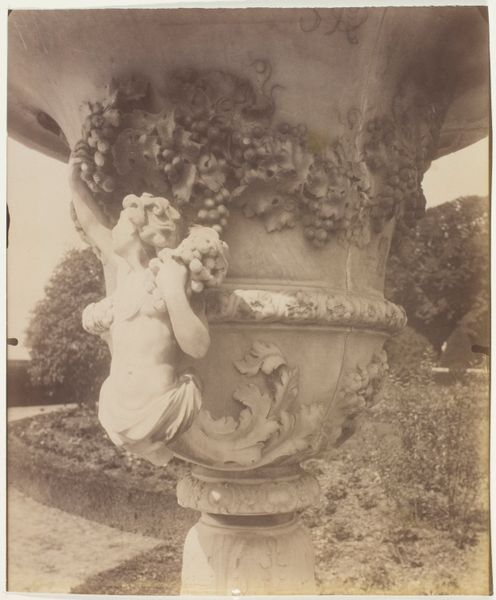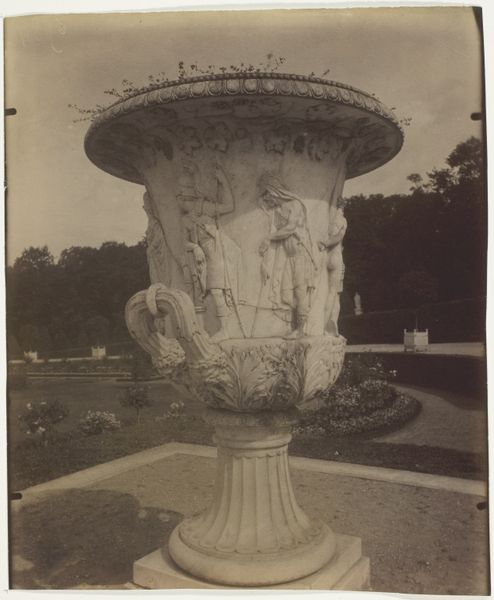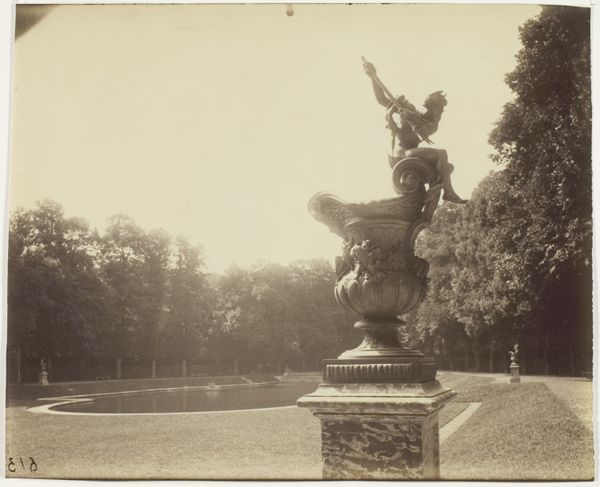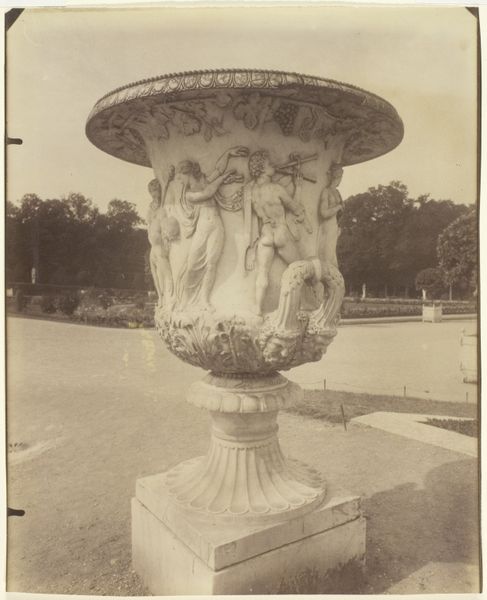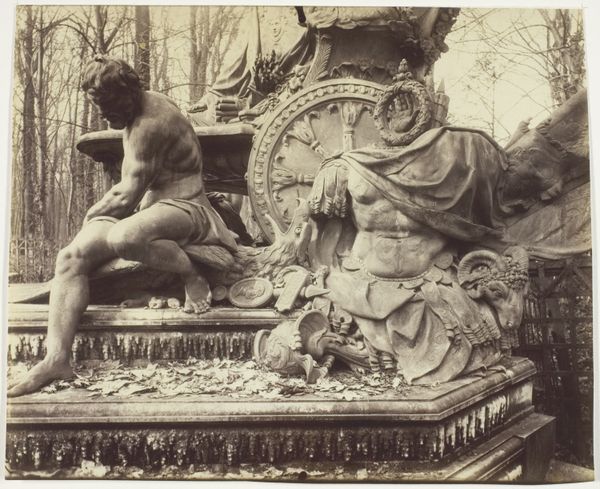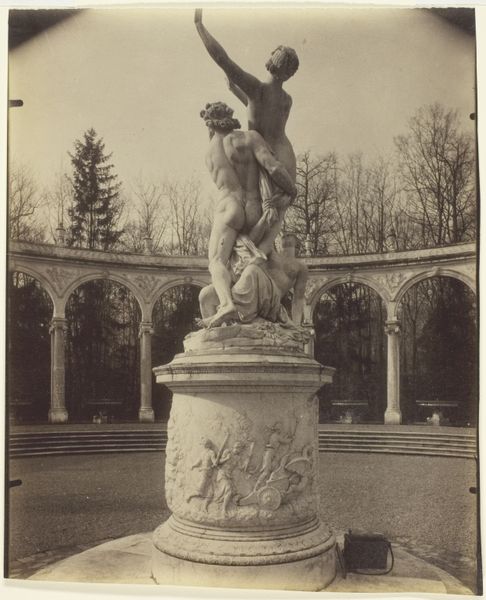
print, photography, sculpture
# print
#
landscape
#
classical-realism
#
figuration
#
photography
#
sculpture
#
cityscape
Dimensions: 21.7 × 17.7 cm (image/paper)
Copyright: Public Domain
Curator: Eugène Atget's 1906 photograph, "Versailles, Les Marmousets," part of the Art Institute of Chicago's collection, offers a glimpse into the formal gardens of Versailles. Editor: My first thought is that it feels… melancholic. The soft, sepia tones lend this air of faded glory, almost as if we are witnessing something on the verge of being lost to time. It's quite beautiful in a haunting way. Curator: The sculpture itself, "Les Marmousets", or "The Pipsqueaks," embodies themes common in classical sculpture—youth, beauty, the playful embrace of innocence. Atget focused primarily on architecture and the surrounding landscape, suggesting themes of both permanence and, interestingly, the ephemerality of even grand design as nature begins to take its course. Editor: Those cherubic figures, caught mid-gesture as they support the basin, it almost suggests they are holding up this great, past-its-prime European civilization with their tiny bodies. Am I projecting a bit too much? Curator: Not at all! One might interpret the photograph as commentary on power and its foundations. These gardens are a statement of the absolutist French monarchy and embody a kind of hubris but rendered by Atget in a light of nostalgia and fragility. Editor: And what about the print itself, this method of documentation? Is it a statement, too? That even this grand vision must eventually fade? It does have a wistful sense. Curator: Exactly! The photographic print is a document of that specific moment, now long gone. The sculpture remains, changed by time, but the photograph holds a unique memory. We look to the photograph now as we might look into memory itself. Editor: That contrast, between the rigid formality of the palace and gardens versus the artist capturing them so fleetingly. Almost rebellious. It invites reflection of one’s fleeting relationship with things much bigger than oneself. It's moving. Curator: Agreed. It invites introspection not only about art and culture, but the cyclical nature of civilization itself. Editor: A gentle reminder of impermanence from a couple of cheeky cherubs in a fountain! Curator: A truly remarkable feat of artistry and observation.
Comments
No comments
Be the first to comment and join the conversation on the ultimate creative platform.
